A rain chain with a proper drainage system can help prevent flooding, soil erosion, and other damage.
Drainage ideas for your rain include using rain barrels, installing catch basins, constructing a pebble or gravel bed, creating a rain garden and drain channels, integrating into water features, using dry wells, investing in a water harvesting system, etc.
Following is a detailed discussion of the ideas and what you need to consider.
Before diving into the ideas, you might want to learn about;
- What Rain Chains are and How Exactly do they work
- How to Install Rain Chains Properly + Pro Tips
- How to Use Rain Chains Without Gutters
Rain Chain Basins + Ideas
Also known as rain chain collectors, rain catch basins, or simply receptacles, rain chain basins are large dish-like containers you place at the bottom of your rain chain to collect the flowing water and drain or disperse it away from the house foundation. The basins can also serve as an attractive focal point in your garden or yard.
To meet different individual tastes and styles, rain chain basins come in various sizes, shapes, and colors. They are made from materials including copper, brass, stainless steel, or decorative ceramic.
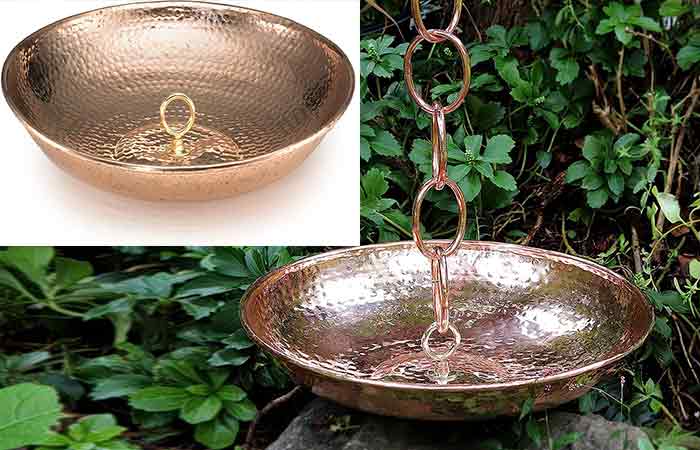
While some designs are self-draining to filter water out after rainstorms, others have no drainage mechanisms. Depending on the material from which the basin is made, you can still add the drainage holes on your own. Other catch basins come with a spout feature for drainage.
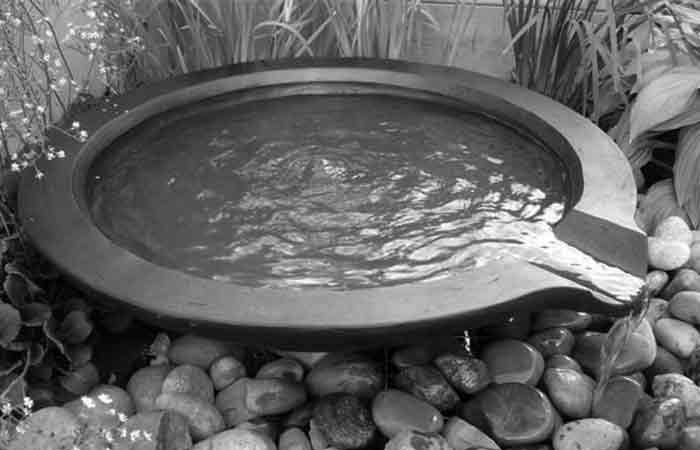
Use Rain Barrels
Rain barrels are well-known for their ability to collect rainwater and store it for later use such as watering plants or cleaning purposes. This setup allows you to conserve water and cut down on water bills.
All you need to do is attach the rain chain to a single or series of barrels. You can choose from many different rain barrel designs and sizes. Typically, they are made from sturdy materials like metal, plastic, wood, etc.
When selecting a barrel for your rain chain system, ensure it has a fixture at the bottom so that you can easily redirect the water where it needs to go. Follow are our top-selling barrels
KMJETNIVY Rain Barrel 100G portable Rainwater Collection System
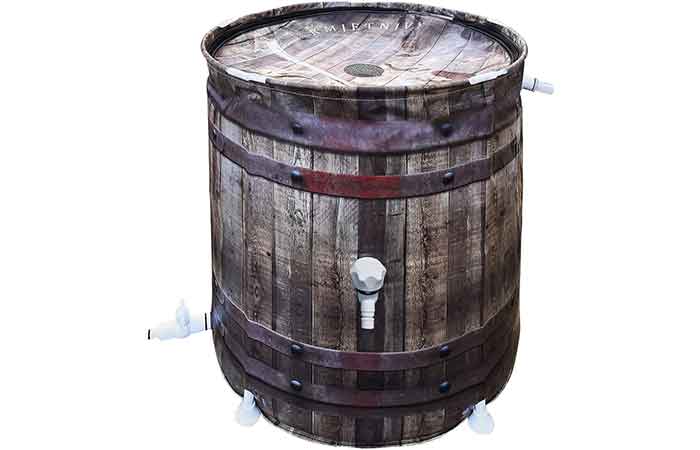
FCMP Outdoor Wood Grain Rain Barrel
FCMP Outdoor BPA Free Flat Back Home Rain Barrel, Black
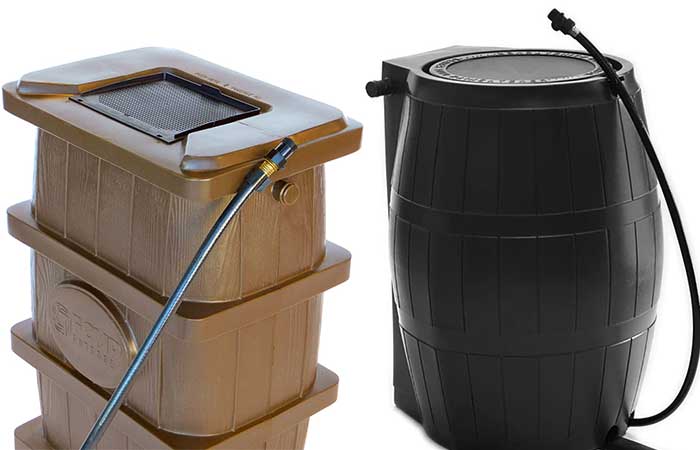
Construct Pebble/Gravel Bed
Creating a rock, gravel, or pebble bed at the base of your rain chain can help disperse the water as it cascades down. The gravel acts as a natural filter, allowing water to percolate into the soil.
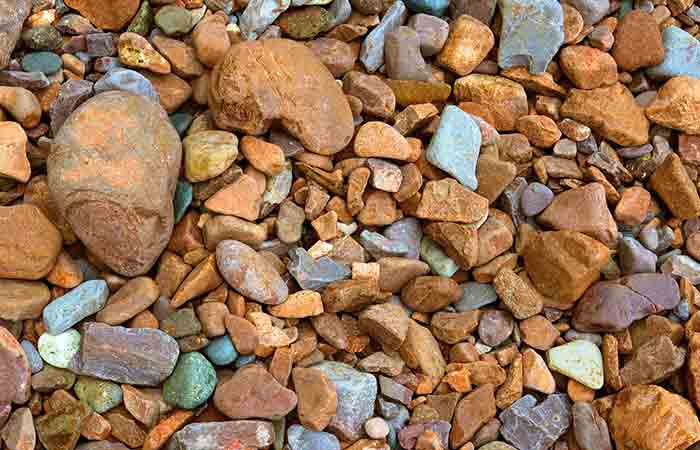
Pebbles or small rocks are a good drainage idea because they are easy to install and look great no matter where you install them. They’re also heavy and hence cannot be washed away like other lightweight materials.
Adjust the size and depth of the gravel bed can be adjusted according to your specific needs and preferences.
Create Rain Garden
A rain garden is a shallow depression, usually filled with a mix of special soils and plants, that is strategically located to collect and filter water that flows off hard surfaces.

The garden not only enhances the appearance of your yard but also assists in natural water infiltration while recharging the groundwater. It can also provide a habitat for other beneficial insects
Select native plants and flowers that can tolerate both wet and dry conditions
Create a Channel Drain
Channel drains are long, narrow drains that collect water and direct it to a designated drainage area or a collection point to prevent erosion and any other splash damage. Some designs can also create an appealing water feature in your yard.
There are a couple of ways to create channel drains. Following are some ideas you might want to consider.
Rain Chain Swale/Valley
A swale or valley is a natural, shallow trench, bermed a bit on both sides, that lets gravity do the work of moving water from the rain chains along a gently sloping course.
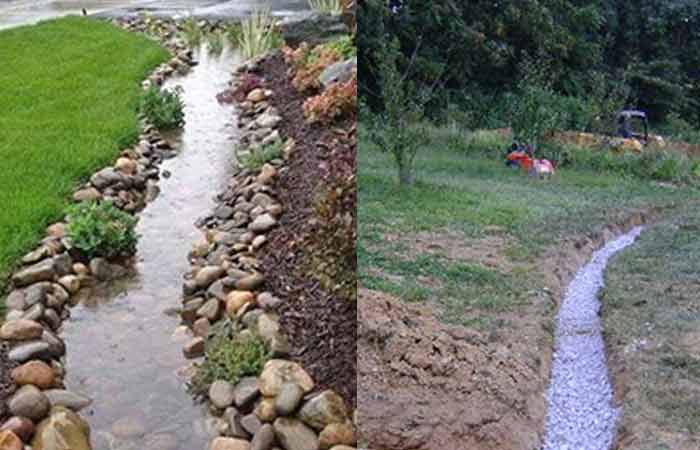
Create a swale in your yard, and position the rain chain to allow the water to flow along the swale.
You can line the valley with gravel, stones, or vegetation to aid in water absorption and filtration. This method helps distribute and disperse the rainwater throughout your yard while minimizing runoff.
Rain Chain and French Drain System
Installing a French drain system near your rain chain can also help manage the flow of water. A French drain typically consists of a perforated pipe buried in a gravel-filled trench.
It gathers and channels water away from the rain chain area, directing it to a suitable outlet or a designated drainage area.

Trench Drain System
A trench drain system mostly consists of a grated channel or trough with an integrated drain pipe.
Unlike French drains which are subsurface systems, trench drains are surface systems designed to control a lot of water. An alternative for a trench drain is a slot drain, usually narrower and less bulky
Integrate Rain Chains into Water Features
Another creative way to manage the splashes from your rain chains is to add a water feature into which the water can flow directly. Here are some water features that you incorporate
A small fountain or spout at the top. As the rainwater flows down the chain, it will create a soothing sound and visual display. You can direct the water into a basin or reservoir and recirculate it for continuous enjoyment.
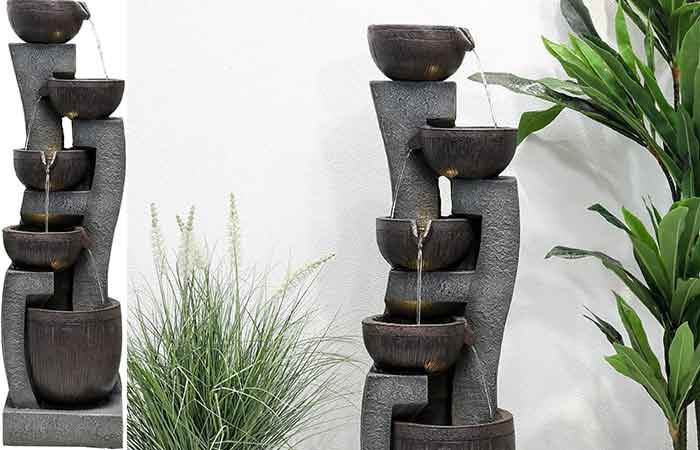
Use a series of cascading pots or planters instead of a traditional rain chain. As the rainwater descends from one pot to another, it adds a charming and whimsical touch to your outdoor space.
Connect your rain chain to a small pond or birdbath. This setup can attract birds and other wildlife while providing a natural drainage solution.
Install a Trellis/Vertical Garden Structure
Incorporate a trellis structure along with your rain chain to create a vertical garden effect. Plant climbing vines or flowering plants near the trellis, and let the rainwater trickle down the chain, nourishing the plants as it cascades. This design adds both functionality and beauty to your outdoor space.
Garraí Vertical Garden Planter
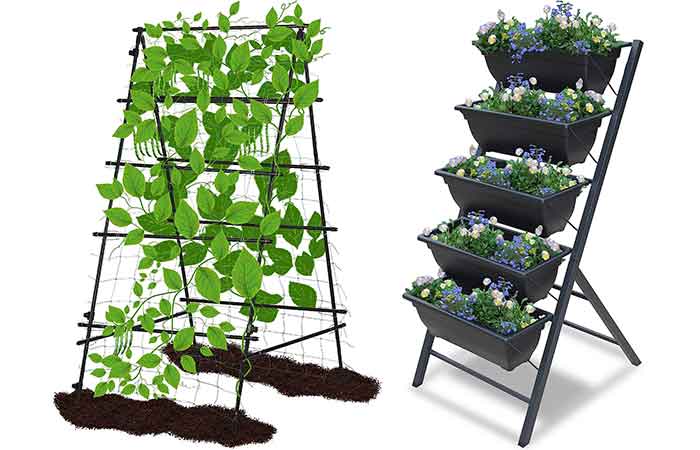
Planter Boxes or Pots
You can place large outdoor planters, of pot or box designs beneath your rain chain to collect and irrigate the plants.
Remember to add some drainage holes or simply buy designs with self-watering disks and drainage holes like the Sunvivi outdoor planter box.
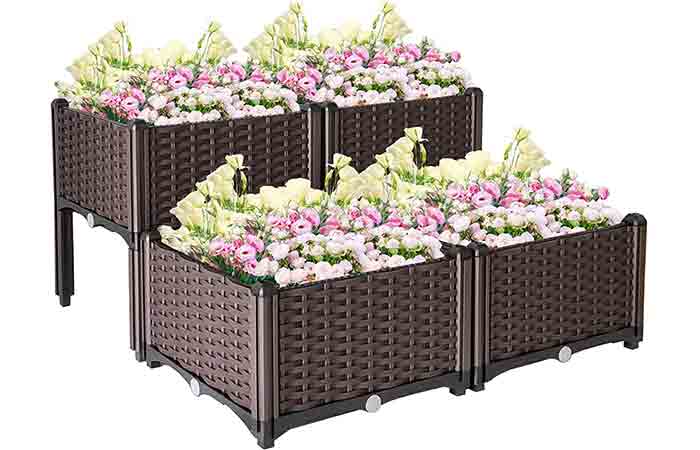
The self-watering disk feature provides space to reserve excess water and helps plants absorb the water and nutrition completely.
Choose planters that are lightweight and easy to assemble, and are built with sturdy and corrosion-resistant materials.
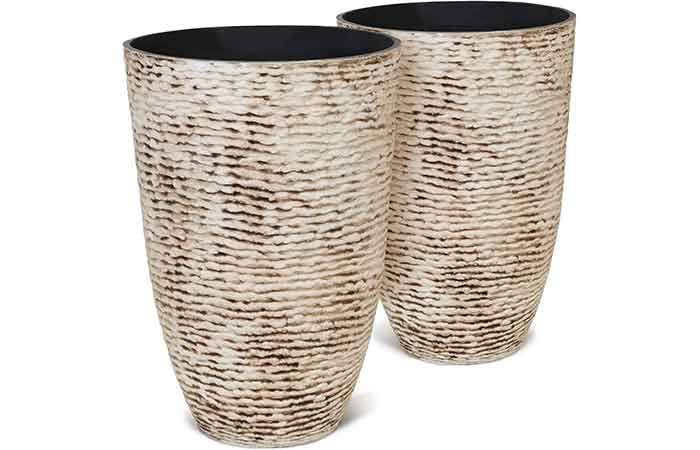
Decorative Containers
You can also create or buy containers that you can use to manage the water from the rain chains.
The containers can be of the types that collect and hold the water for later use or self-draining types that slowly release the water to the surrounding ground or plantation
Create or buy containers with attractive designs or art that match your outdoor decor.
Drywells
A dry well is basically a stone-filled hole in the ground that you can use to collect runoff from your rain chains, gutter downspouts, roof valleys, and other areas where water concentrates and flows.
Install a dry well near the rain chain to provide a subsurface storage area for excess water. The well can be constructed using perforated pipes surrounded by gravel or a pre-made dry well system kit.
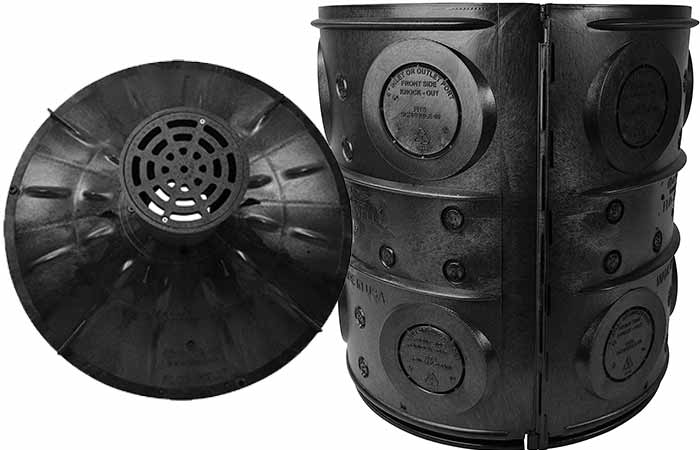
Install a Rain Chain Splash Block
A splash block is a concrete or plastic device you can place at the end of your rain chain to disperse the water and prevent it from causing damage to the surrounding landscaping or pooling near your house’s foundation.
When installed properly, splash blocks enhance the look of your rain chain by providing an eye-catching landing point for the water as it flows down from the chain.
Rain chain splash blocks come in various designs and materials, ranging from simple concrete blocks to more decorative options. Choose one that matches the style of your rain chain.
Permeable Pavers or Pathway
Installing a permeable surface alongside the rain chain is another way to manage the flow of water. This allows the water to permeate through the surface and infiltrate into the ground
You can choose to install ready-made permeable pavers or paving stones or gravel.
Rainwater Harvesting System
A fresh installation of a rainwater harvesting system that integrates with your rain chain can be quite expensive way of managing the flow of water. However, it can be cheaper if you already have the system in place
Rainwater harvesting systems typically consist of a storage tank or cistern that collects rainwater from the chain, downspouts, and any other runoff systems. You can use the collected water for various purposes, such as irrigation, cleaning, or even as a backup water source for emergencies.
Do remember to check your local building codes and regulations regarding rainwater management and drainage before implementing some of the above ideas.
Also consider factors such as the slope of your landscape, the local climate, and the available space when choosing the drainage system for your rain chain
As an Amazon Associate, we earn from qualifying purchases. Details here
